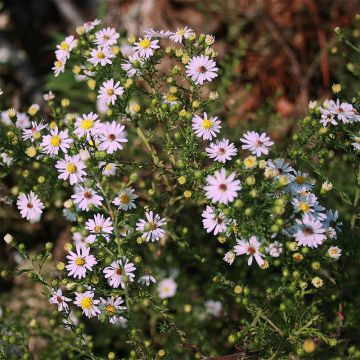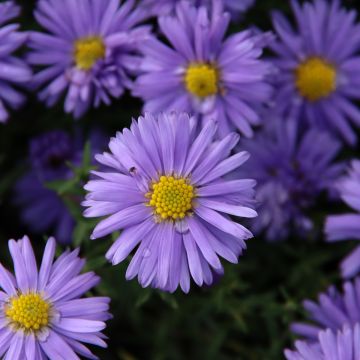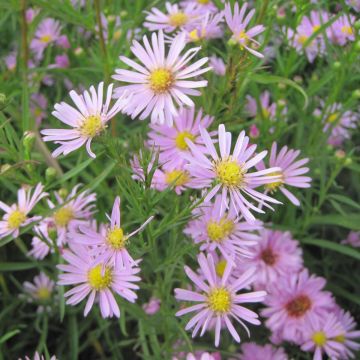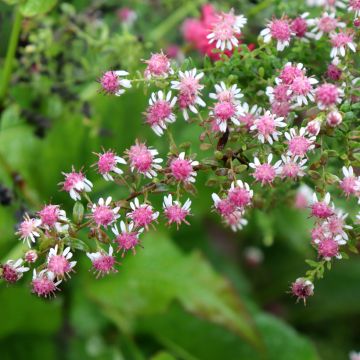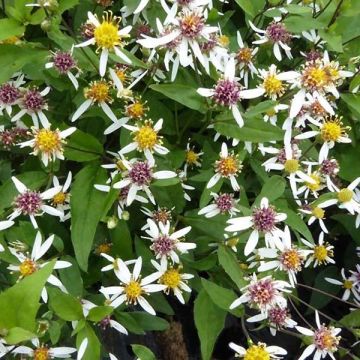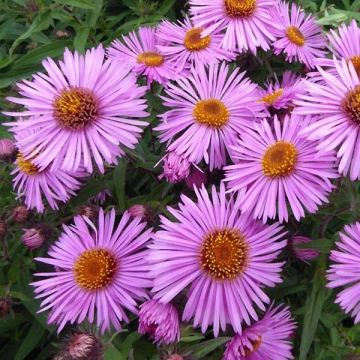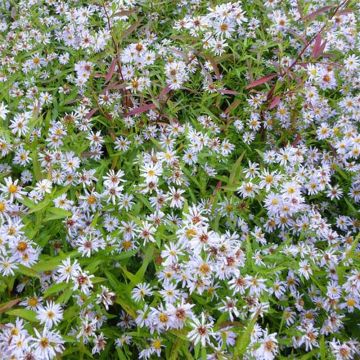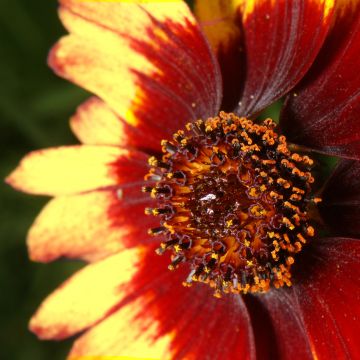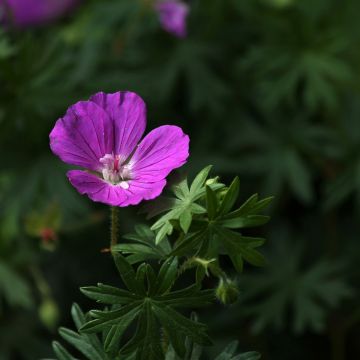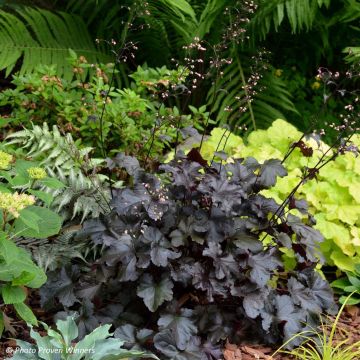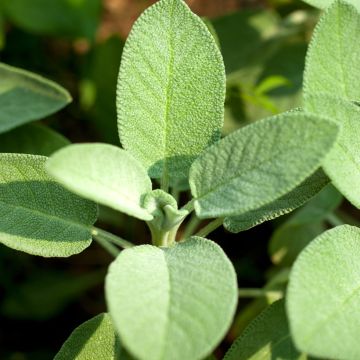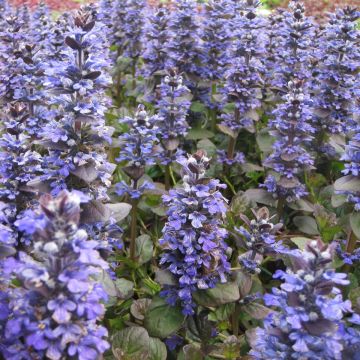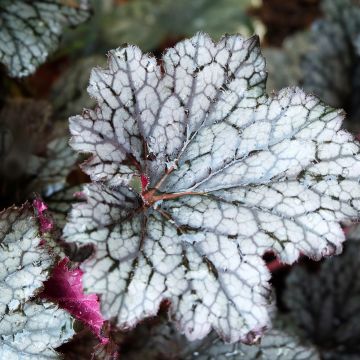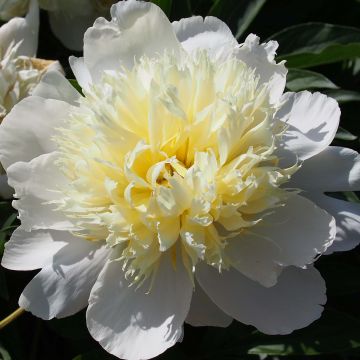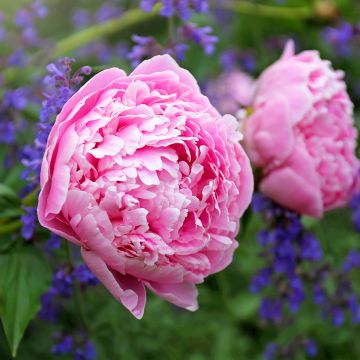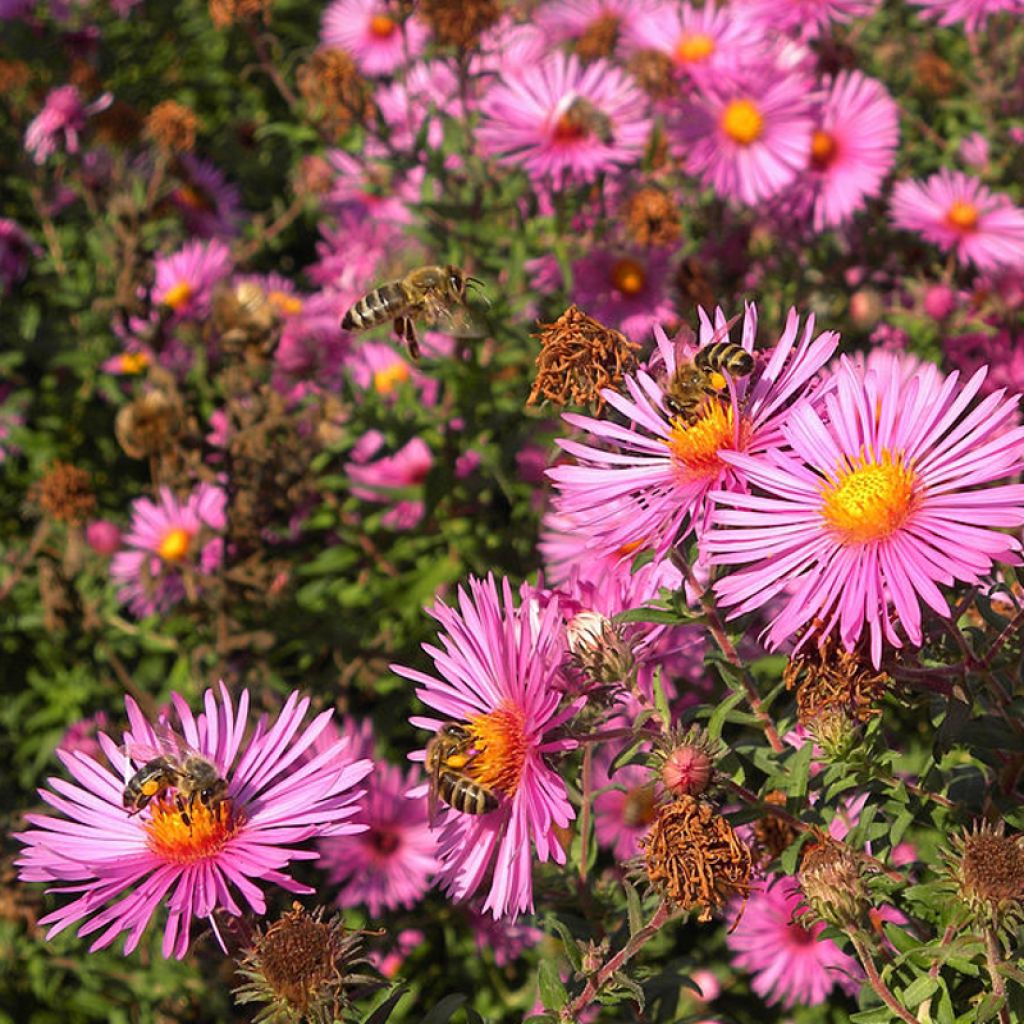

Aster novae-angliae Andenken an Paul Gerber
Aster novae-angliae Andenken an Paul Gerber
Aster novae-angliae Andenken an Paul Gerber
New England aster, Michaelmas daisy
Incredibly floriferous. Huge bouquets. Surprised by the colour which I would have preferred more of a medium pink, whereas it leans towards a too vivid pink/purple acid shade for my taste. Luckily, the Japanese anemones were there to soften things up a bit.
Annaïck, 20/11/2024
This item cannot be shipped to the selected country
Delivery charge from €5.90
Delivery to Corse prohibited
More information
Schedule delivery date,
and select date in basket
This plant carries a 12 months recovery warranty
More information
We guarantee the quality of our plants for a full growing cycle, and will replace at our expense any plant that fails to recover under normal climatic and planting conditions.
From €5.90 for pickup delivery and €6.90 for home delivery
Express home delivery from €8.90.
Delivery to Corse prohibited: UE law prohibits the import of this plant from mainland France to Corse as part of the fight against Xylella fastidiosa. Please accept our sincere apologies.
More information
Does this plant fit my garden?
Set up your Plantfit profile →
Description
The Aster or Symphyotrichum novae-angliae Andenken an Paul Gerber is an old variety, still highly appreciated for the brilliance of its pink-violet flowers with orange centres, pleasantly fragrant. Once neglected in favour of other varieties considered more refined, New England asters are now gaining interest due to their natural resistance to powdery mildew, the strength of their stems, as well as their adaptability to humid climates and clayey and moist soils that are sometimes suffocating. Paul Gerber stands tall, delivering from late summer to the first frost a quantity of delightful scented flower heads that butterflies love. For all these reasons, it can be adopted without reservation in sunny borders, within a small mixed hedge, or even to adorn the damp edges of a pond. Its flowers last a long time in bouquets.
The Asteraceae family, which includes Asters, is mainly characterised by the shape of its flower heads, called capitulum. Aster novae-angliae is a very hardy plant native to the wet prairies of easern and central North America. This variety, Paul Gerber, introduced in Germany in 1950, is both vigorous and endowed with brightly coloured flowers, gently scented and particularly long-lasting in borders and bouquets. The plant grows in an upright clump made of strong stems often reaching 1.40m (5ft) to 1.50m (5ft) in height. Very hardy, it can withstand temperatures down to - 30°C, and it blooms abundantly in September-October. Its small semi-double daisies, 5cm (2in) wide, are composed of a collar of ligules of a satin pink-violet colour, very fine, surrounding a small centre of a very warm yellow-orange colour, forming a little sun. Flowering will be more generous if the plant does not lack water in summer. It likes full sun, but will prefer to have its base protected by a thick mulch. The stems, woody at the base, carry leaves with narrow, rough, and hairy lamina, of a slightly greyish green. The small stems that bear the flowers are often tinged with purple, enriching the colour palette of this decidedly delightful variety.
Aster 'Andenken an Paul Gerber' is perfect in borders, extending the flowering season in the garden into autumn, but you can also plant it in large pots to brighten up the surroundings of your house - and use its flowers to adorn the interior with generous scented bouquets. In the ground, create a rustic feel by surrounding your asters with tall perennials (Gauras, Rudbeckia, perennial sunflowers, inulas) and small bushes (landscape roses, Perovskia, Caryopteris, small Hydrangea macrophylla), plus evergreens like cotoneaster, Lonicera nitida, or creeping junipers to provide some greenery to accompany the asters until the end of their flowering period. In bouquets, mix them together and add some grass stalks such as Pennisetum setaceum rubrum or Stipa pennata, Dahlias, Chinese lanterns, and branches of Callicarpa loaded with fruits.
Report an error about the product description
Aster novae-angliae Andenken an Paul Gerber in pictures
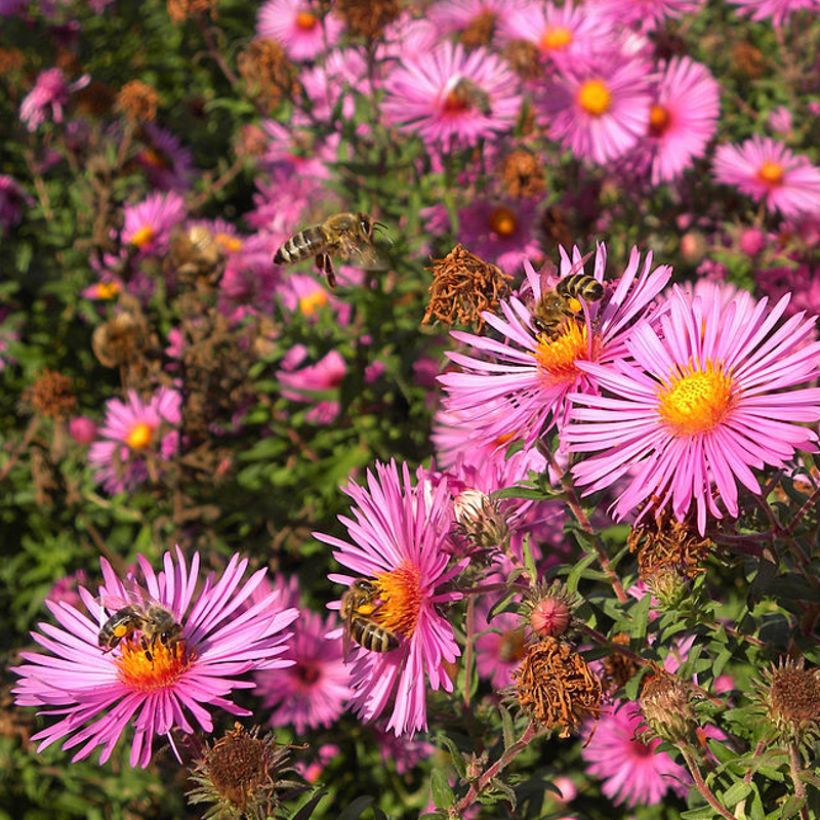

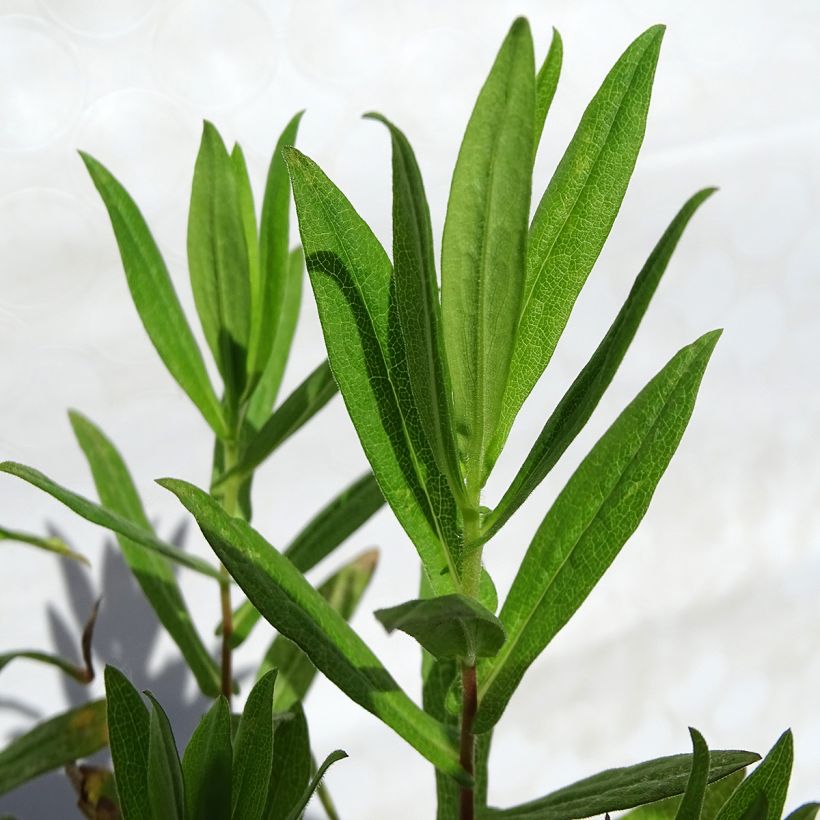

Flowering
Foliage
Plant habit
Botanical data
Aster
novae-angliae
Andenken an Paul Gerber
Asteraceae
New England aster, Michaelmas daisy
Paul Gerber'
Cultivar or hybrid
Other Asters
Planting and care
Plant Aster novae-angliae 'Andenken an Paul Gerber' in autumn or spring in ordinary, rich and well-worked soil. It can tolerate temperatures as low as -30 °C. It prefers full sun but can tolerate partial shade where it will have a slightly looser habit. Strong winds should be avoided as they could flatten the clumps. While this variety generally does not require staking, it may be wise to surround it with shrubs or perennials with sturdy stems to prevent the plant from falling open under the weight of rain. Avoid moving once established as it does not like change. In a bed, maintain a spacing of at least 50-60 cm (20-24in) around the plants; this aster does not tolerate competition from other roots at all. Mulch the soil from June onwards, and water in the case of heatwaves. New England Asters are not susceptible to powdery mildew. Divide the clumps every three years to ensure they keep flowering abundantly. Do not replant the divisions in the same spot, and provide them with a rich soil.
Planting period
Intended location
Care
-
, onOrder confirmed
Reply from on Promesse de fleurs
Foolproof perennials
Haven't found what you were looking for?
Hardiness is the lowest winter temperature a plant can endure without suffering serious damage or even dying. However, hardiness is affected by location (a sheltered area, such as a patio), protection (winter cover) and soil type (hardiness is improved by well-drained soil).

Photo Sharing Terms & Conditions
In order to encourage gardeners to interact and share their experiences, Promesse de fleurs offers various media enabling content to be uploaded onto its Site - in particular via the ‘Photo sharing’ module.
The User agrees to refrain from:
- Posting any content that is illegal, prejudicial, insulting, racist, inciteful to hatred, revisionist, contrary to public decency, that infringes on privacy or on the privacy rights of third parties, in particular the publicity rights of persons and goods, intellectual property rights, or the right to privacy.
- Submitting content on behalf of a third party;
- Impersonate the identity of a third party and/or publish any personal information about a third party;
In general, the User undertakes to refrain from any unethical behaviour.
All Content (in particular text, comments, files, images, photos, videos, creative works, etc.), which may be subject to property or intellectual property rights, image or other private rights, shall remain the property of the User, subject to the limited rights granted by the terms of the licence granted by Promesse de fleurs as stated below. Users are at liberty to publish or not to publish such Content on the Site, notably via the ‘Photo Sharing’ facility, and accept that this Content shall be made public and freely accessible, notably on the Internet.
Users further acknowledge, undertake to have ,and guarantee that they hold all necessary rights and permissions to publish such material on the Site, in particular with regard to the legislation in force pertaining to any privacy, property, intellectual property, image, or contractual rights, or rights of any other nature. By publishing such Content on the Site, Users acknowledge accepting full liability as publishers of the Content within the meaning of the law, and grant Promesse de fleurs, free of charge, an inclusive, worldwide licence for the said Content for the entire duration of its publication, including all reproduction, representation, up/downloading, displaying, performing, transmission, and storage rights.
Users also grant permission for their name to be linked to the Content and accept that this link may not always be made available.
By engaging in posting material, Users consent to their Content becoming automatically accessible on the Internet, in particular on other sites and/or blogs and/or web pages of the Promesse de fleurs site, including in particular social pages and the Promesse de fleurs catalogue.
Users may secure the removal of entrusted content free of charge by issuing a simple request via our contact form.
The flowering period indicated on our website applies to countries and regions located in USDA zone 8 (France, the United Kingdom, Ireland, the Netherlands, etc.)
It will vary according to where you live:
- In zones 9 to 10 (Italy, Spain, Greece, etc.), flowering will occur about 2 to 4 weeks earlier.
- In zones 6 to 7 (Germany, Poland, Slovenia, and lower mountainous regions), flowering will be delayed by 2 to 3 weeks.
- In zone 5 (Central Europe, Scandinavia), blooming will be delayed by 3 to 5 weeks.
In temperate climates, pruning of spring-flowering shrubs (forsythia, spireas, etc.) should be done just after flowering.
Pruning of summer-flowering shrubs (Indian Lilac, Perovskia, etc.) can be done in winter or spring.
In cold regions as well as with frost-sensitive plants, avoid pruning too early when severe frosts may still occur.
The planting period indicated on our website applies to countries and regions located in USDA zone 8 (France, United Kingdom, Ireland, Netherlands).
It will vary according to where you live:
- In Mediterranean zones (Marseille, Madrid, Milan, etc.), autumn and winter are the best planting periods.
- In continental zones (Strasbourg, Munich, Vienna, etc.), delay planting by 2 to 3 weeks in spring and bring it forward by 2 to 4 weeks in autumn.
- In mountainous regions (the Alps, Pyrenees, Carpathians, etc.), it is best to plant in late spring (May-June) or late summer (August-September).
The harvesting period indicated on our website applies to countries and regions in USDA zone 8 (France, England, Ireland, the Netherlands).
In colder areas (Scandinavia, Poland, Austria...) fruit and vegetable harvests are likely to be delayed by 3-4 weeks.
In warmer areas (Italy, Spain, Greece, etc.), harvesting will probably take place earlier, depending on weather conditions.
The sowing periods indicated on our website apply to countries and regions within USDA Zone 8 (France, UK, Ireland, Netherlands).
In colder areas (Scandinavia, Poland, Austria...), delay any outdoor sowing by 3-4 weeks, or sow under glass.
In warmer climes (Italy, Spain, Greece, etc.), bring outdoor sowing forward by a few weeks.

































